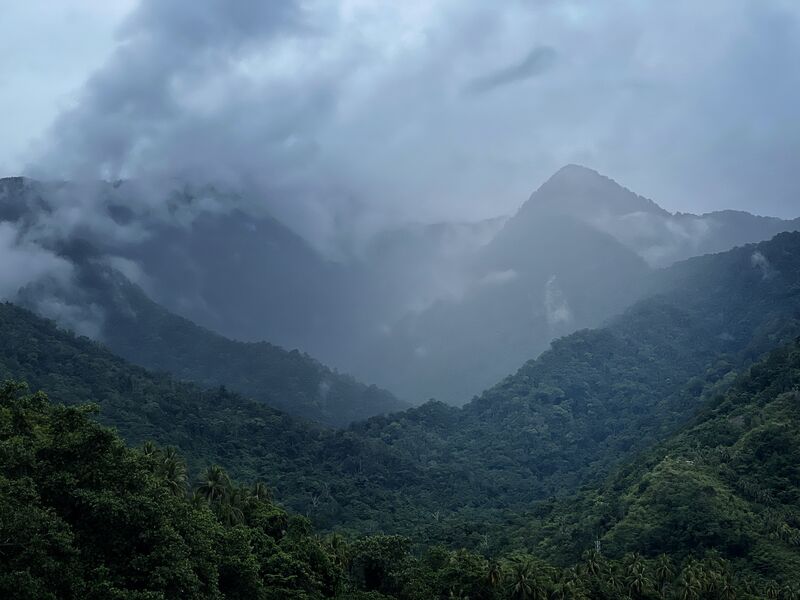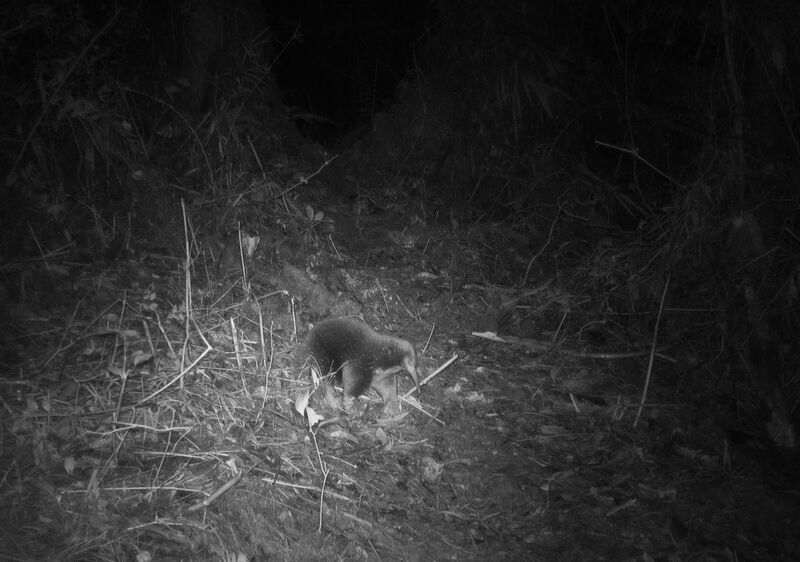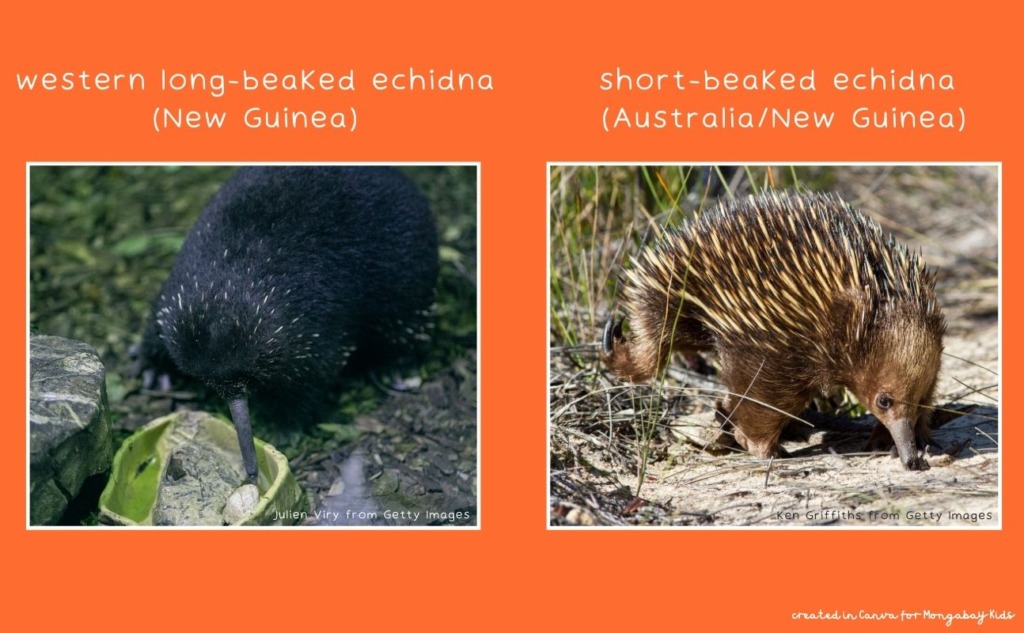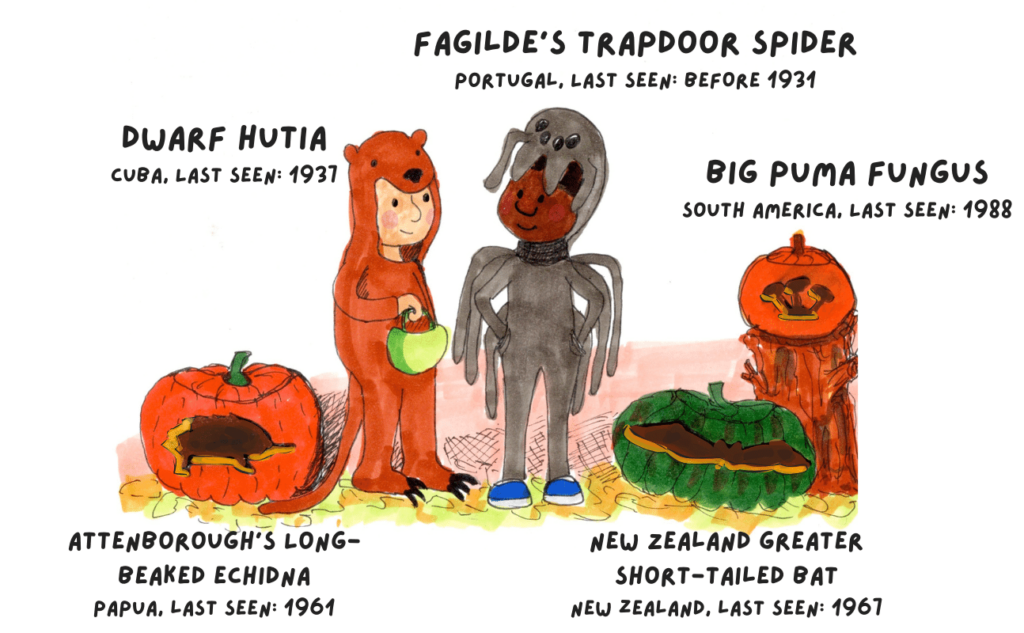Breaking news: A unique animal has been captured on camera for the first time
A spiky, beaked, egg-laying mammal has been making headlines around the world. It is an echidna. And not just any echidna, but one that has been “lost” for over 60 years.
Scientists call this echidna Attenborough’s long-beaked echidna (Zaglossus attenboroughi). It was named for famous broadcaster and natural historian Sir David Attenborough. And for 62 years, the only specimen known to science was a skin stored in a natural history museum in Europe.
Where does it live?
Attenborough’s long-beaked echidna lives in the forests of Indonesia’s Cyclops Mountains – a remote and rugged place full of spectacular plants, animals, and fungi. Local Indigenous people call this animal payangko. And payangko is important to their culture.

Why was this echidna considered lost?
Although local people have known about the echidna in their backyard forest, scientists have never been able to capture any photographs or videos of it. Until now.
How was it found?
The expedition team was led by an Indonesian NGO called YAPPENDA, with support from researchers, biologists, and local people. To find the echidna, the team trekked into the forested mountains, setting camera traps along the way. They hoped to capture images of the shy, nocturnal echidna going about its nightly business of hunting for worms.
Trekking around the Cyclops Mountains was exciting, but difficult. The expedition team climbed over 11,000 m (36,000 feet), encountering difficult terrain and tough weather conditions. They also had to deal with venomous snakes, malaria-carrying mosquitoes, and leeches.

Despite these challenges, their hard work paid off. After four weeks without an echidna sighting, images of the echidna were discovered on the last camera trap they visited on the last day of their expedition. As you can imagine, the team was thrilled at the discovery!

“You’d be hard pressed to find a cooler, weirder, more wonderful lost — now found — species,” said Andrew Tilker from Re:wild, who was part of the expedition.

Fun facts about Attenborough’s long-beaked echidna:
- it lays eggs (egg-laying mammals are called monotremes)
- it is one of only 5 living species of monotremes, an ancient lineage of mammal that includes the platypus
- it has a long beak (snout) that it uses to probe for worms in leaf litter and soil; it has no teeth and uses a sticky tongue to slurp up prey
- females don’t have nipples, instead milk oozes from patches in their pouch
- babies are called puggles
- it lives in burrows
- this is the smallest of the long-beaked echidnas
There are four species of echidnas. These are two of the other species:

Watch a short-beaked echidna puggle hatching:
What’s next for Attenborough’s long-beaked echidna?
Attenborough’s long-beaked echidna is classified as critically endangered on the IUCN Red List of Threatened Species. Now that they’ve spotted it, scientists and local communities hope to study the echidna to learn more about it. They hope to protect it and its forest home, which hosts many other incredible living things.
You may also like this story:
Get wild this October and join the search for lost species

Who was involved in this expedition: The team was led by Indonesian NGO Yayasan Pelayanan Papua Nenda (YAPPENDA), with students from Cenderawasih University (UNCEN). It was supported by researchers from Oxford University, Mendel University in Brno, Royal Holloway University in London, and also by Re:wild. Members of the community of Yongsu Sapari also assisted expedition work.
Attenborough’s long-beaked echidna was one of Re:wild’s most wanted lost species.
Written by Megan Strauss for Mongabay Kids






